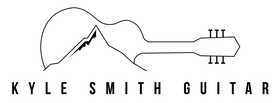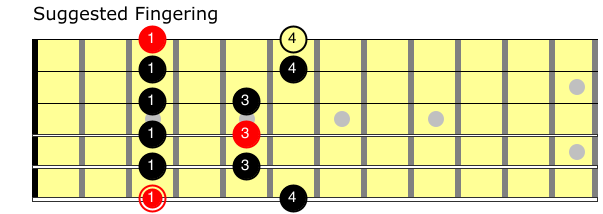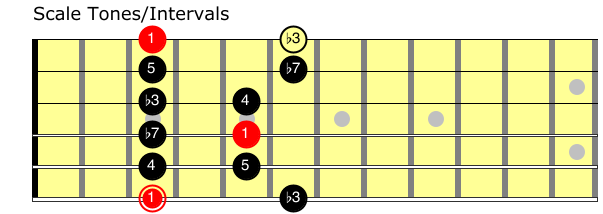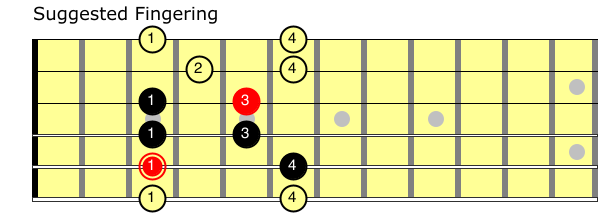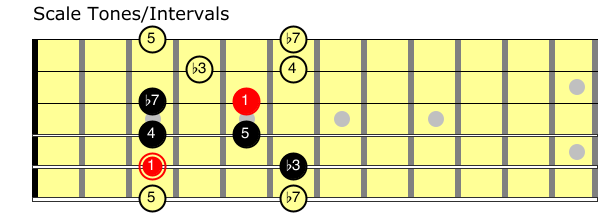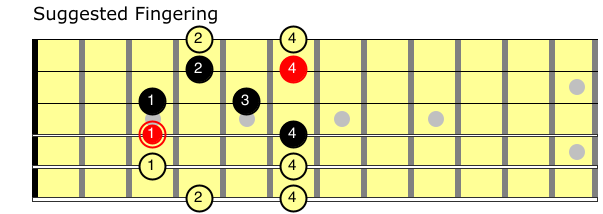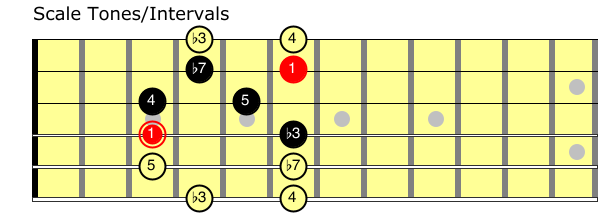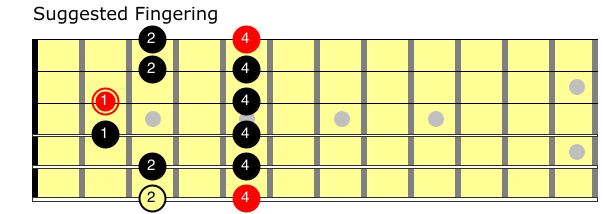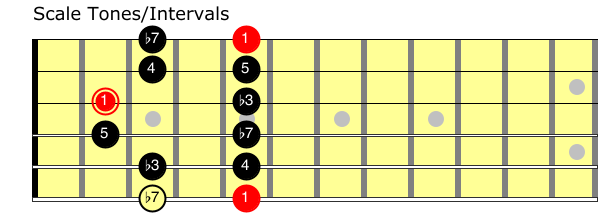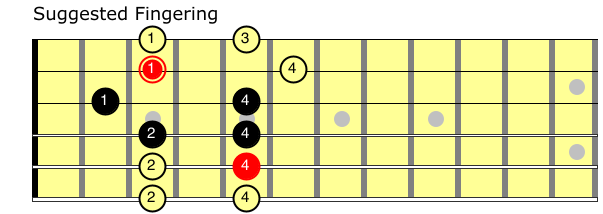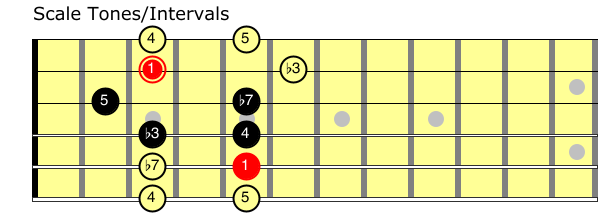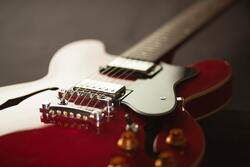 Whether you're playing blues, rock, country, hip hop, or jazz - the minor pentatonic scale is going to be a helpful tool for you to have at your disposal. This is a foundational pattern that appears in many styles of music from around the world, and opens the door for learning new techniques and improving your guitar playing skills. In minor keys, the minor pentatonic scale is going to be your best bet for improvisation most of the time - at least as a starting point. For many styles of music, these patterns make up 80-90% of the material you need for playing solos. Once you have your pentatonic shapes down cold, they will also give you a framework you can use to easily learn your other minor scales on top of. What You Need to Know FirstTo get the most out of this lesson and be able to use the minor pentatonic scale in your playing, you should get familiar with the note names on the guitar fretboard. If you don't know the names of the notes yet, click here to get started. If you don't know the names of the notes yet but you're eager to get going, here is a fretboard map for easy reference: How Do Minor Pentatonic Scales Help you?Minor pentatonic scales will help you improve your soloing skills, increase your technical abilities, and set the stage for learning other minor scales down the road. If you're playing in popular music styles, these patterns will last you for a long time. If you're playing jazz or want to explore different types of scales, these patterns provide the framework you can build your other minor scales around. How To Practice Minor Pentatonic Scales:Play each pattern up and down the guitar neck, moving one fret at a time to get the scale into your muscle memory. You can also try finding specific keys and trying to play each scale pattern in that key. For each scale:
The 6th string form is a little unique here - the starting root is the lowest possible note so you can skip the last step. Follow the included TAB/Notation practice example for each scale pattern at first to get the hang of it. When you're comfortable with the finger patterns, try following along with the scale tones/intervals included below as you play to give yourself an added challenge. This will help you develop your ability to learn melodies by ear, and provide a foundation for understanding music theory. Minor Pentatonic Scale ConstructionWhile mechanically it’s helpful to look at the suggested finger patterns, knowing what intervals make up your scale is going to be important for your musical development. Intervals refer to the distance a note is above the Root (1) of the scale. Minor pentatonic scales have 5 different notes before they start over at a new octave:
5 Finger PatternsOverall there are 5 finger patterns you need to know. You may already be familiar with some of these patterns, or know them by different names. In my experience most people don't really know more than one or two of these scale shapes, and can't use more than one in their playing. Note that any one of these patterns will give you the ability to play your major pentatonic scale in all 12 keys. By sliding the patten up and down the neck, you can change the key of the scale you are playing without having to change your finger pattern. Learning more of the patterns gives you access to play in the same key at different parts of the guitar neck. This has 2 benefits:
Start with one pattern, and work you way through the rest as you have time - get comfortable with the 6th string form before you move on to the other scale patterns. If you're a serious student, you need to learn all of these - it's just part of the job. If you're playing for fun and a hobby, one or two of these will take you farther than most people at your level, while it won't be difficult for you to learn all 5 shapes over time. Focus on quality over quantity - it’s always better to be really good at one or two of these patterns than to be sort of able to play every scale pattern. 6th String FormThe 6th string form starts with your index finger on the 6th string. Your starting note on the 6th string determines the name of the scale you are playing. The example below is a G minor pentatonic scale. If you moved up a fret, you would be playing an Ab minor pentatonic scale. Practice Example5th String FormThe 5th string form starts with your index finger on the 5th string. Your starting note on the 5th string determines the name of the scale you are playing. The example below is a C minor pentatonic scale. If you moved up a fret, you would be playing a Db minor pentatonic scale. Practice Example4th String FormThe 4th string form starts with your index finger on the 4th string. Your starting note on the 4th string determines the name of the scale you are playing. The example below is an F Minor pentatonic scale. If you moved up a fret, you would be playing a Gb minor pentatonic scale. Practice Example3rd String FormThe 3rd string form starts with your index finger on the 3rd string. Your starting note on the 3rd string determines the name of the scale you are playing. The example below is a Bb minor pentatonic scale. If you moved up a fret, you would be playing a B minor pentatonic scale. Practice Example2nd String FormThe 2nd string form starts with your index finger on the 2nd string. Your starting note on the 2nd string determines the name of the scale you are playing. The example below is a D minor pentatonic scale. If you moved up a fret, you would be playing an Eb minor pentatonic scale. Practice ExamplePutting These Scales To WorkThe best way for you to really get these scales under your fingers is to use them as much as possible.
Try them out by improvising over blues progressions, or other simple chord progressions in a minor key. You can find a variety of backing tracks on youtube to play along with as well. The most important thing is to keep playing with these, and let me know how things are going!
0 Comments
Your comment will be posted after it is approved.
Leave a Reply. |
